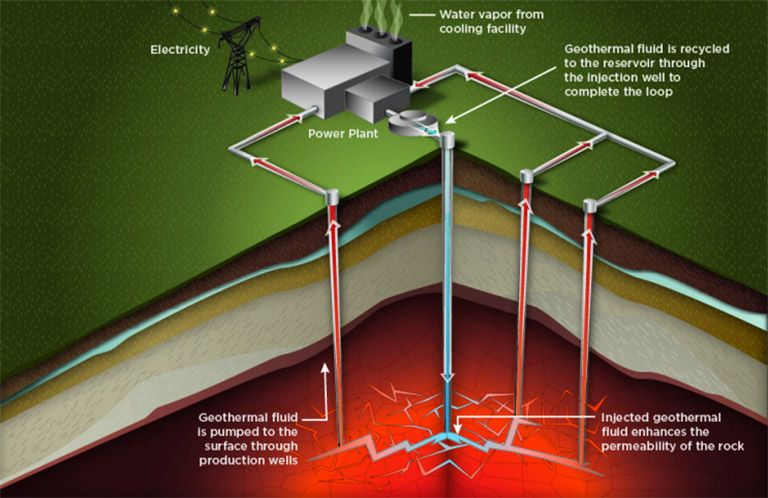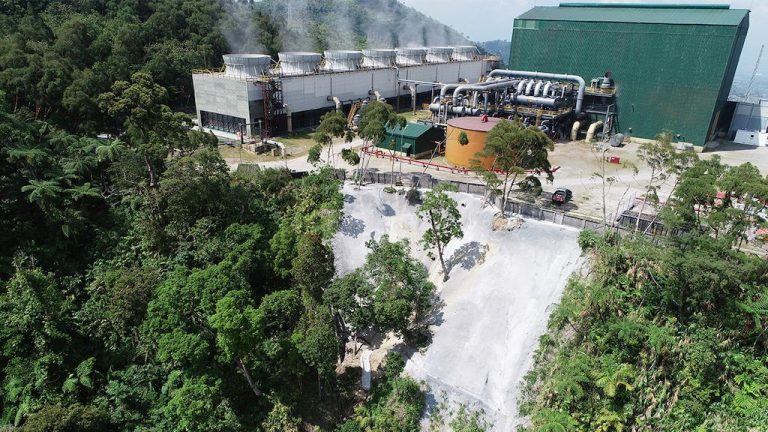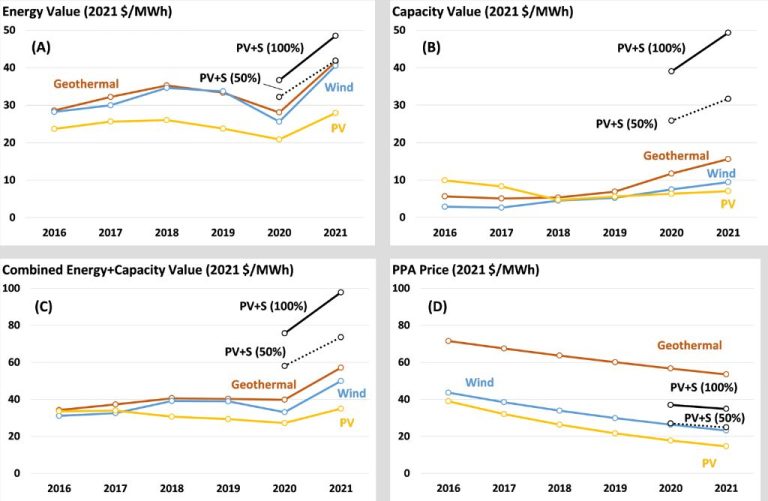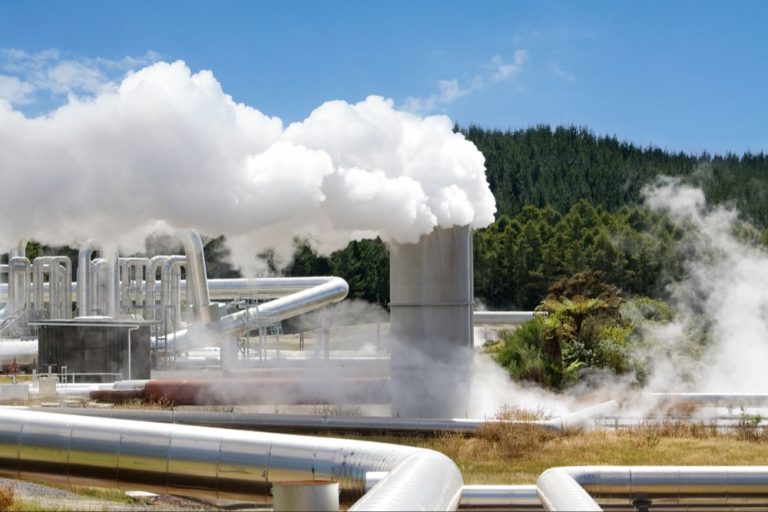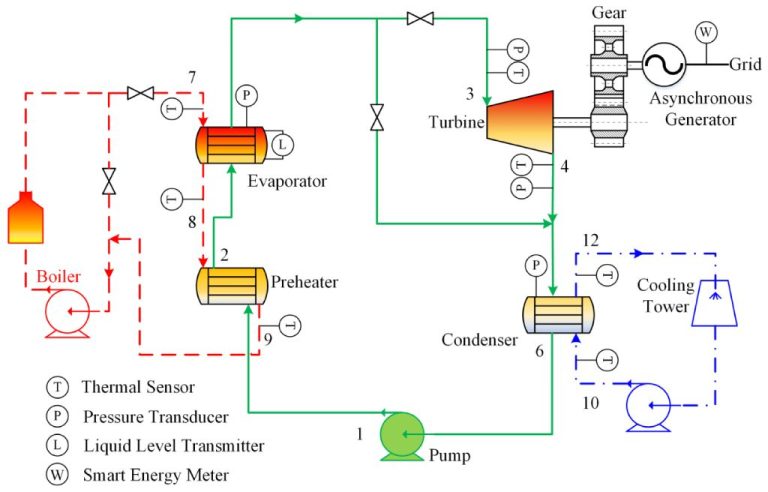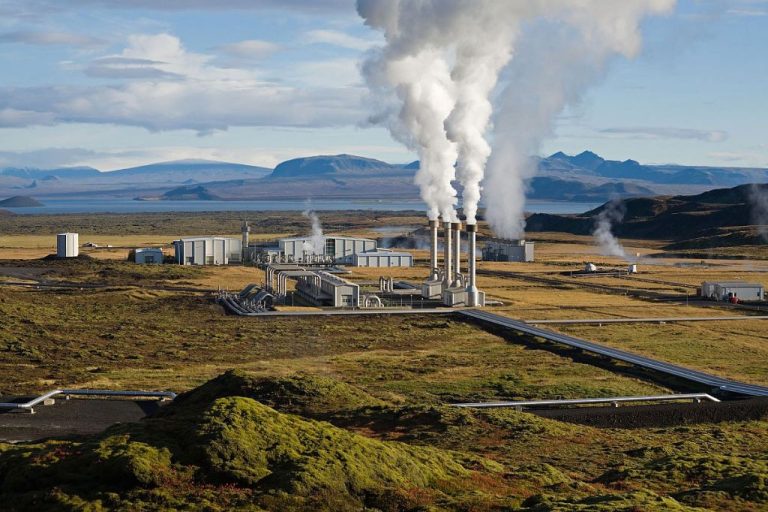How Much Electricity Does Geothermal Energy Produce?
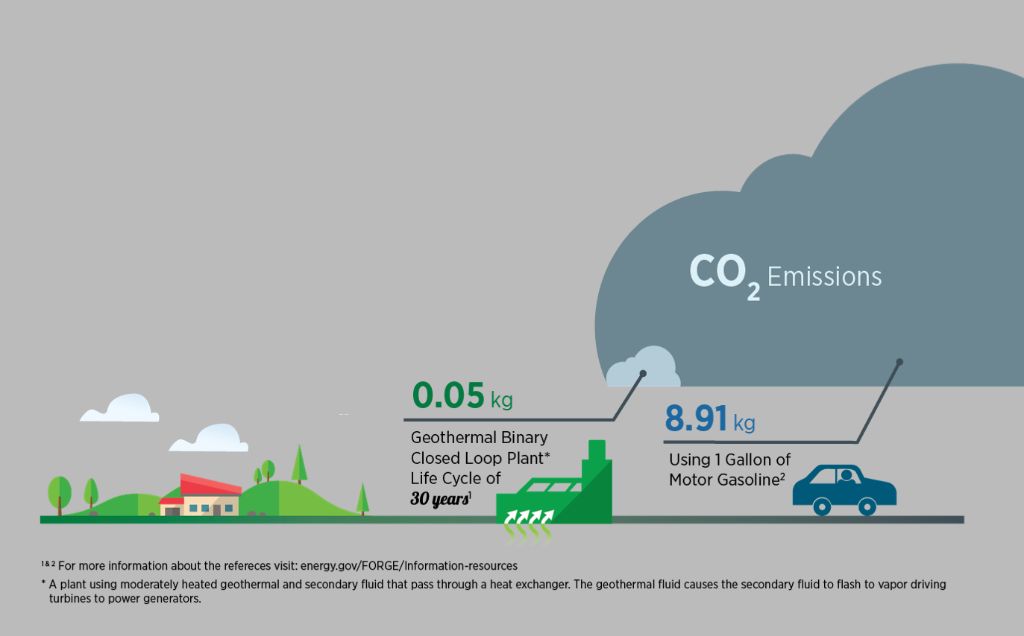
Geothermal energy is thermal energy generated and stored in the Earth (source). It is a renewable energy source that utilizes the natural heat within the earth’s crust to produce electricity and provide heating and cooling. Geothermal power plants operate by tapping into reservoirs of hot water found a few miles or more below the Earth’s surface. Wells are drilled into underground reservoirs to pump the hot water or steam to the surface. The steam rotates a turbine that activates a generator, which produces electricity. The hot water or steam from the Earth’s crust can also be used directly to provide heat for various applications like heating buildings (source).
Global Geothermal Energy Production
Geothermal energy accounted for around 0.4% of total global electricity generation in 2021, producing approximately 90 TWh of electricity that year (Statista). The installed global geothermal capacity in 2021 was estimated at around 16 GW.
The countries with the highest geothermal energy production in 2021 were Indonesia (2.3 GW), United States (2.5 GW), Türkiye (1.6 GW), New Zealand (1 GW), Iceland (0.7 GW), and others (Statista). Indonesia and the U.S. accounted for over 50% of total global geothermal electricity generation.
Global geothermal energy production has been gradually increasing over the past decade, with average annual growth rates around 3-5%. Key factors driving growth include supportive government policies, technology improvements, and the renewable energy transition. However, geothermal still provides only a small fraction of worldwide renewable electricity generation.
Geothermal Energy Production in the US
The United States is the world leader in geothermal energy production, with around 3,700 megawatts (MW) of installed geothermal capacity as of 2021. This accounts for about 27% of total global geothermal power generation capacity [1]. The western states, where most geothermal resources are located, lead geothermal energy production in the US. California has the most installed geothermal capacity at 2,600 MW, providing about 6% of the state’s total electricity generation. The next top states are Nevada (470 MW), Utah (160 MW), Hawaii (46 MW), and Idaho (16 MW) [2].
Geothermal energy production in the US has been growing steadily in recent years. Installed geothermal capacity increased by about 140 MW between 2020 and 2021. Looking further back, geothermal generation has increased by around 800 MW over the past decade [3]. The US Department of Energy has set goals to double geothermal power production by 2030 and increase it 24-fold by 2050 to unleash the nation’s vast geothermal resource potential [4].
Types of Geothermal Power Plants
There are three main types of geothermal power plant technologies used for electricity generation: dry steam, flash steam, and binary cycle [1].
In a dry steam power plant, steam from geothermal reservoirs is piped directly to the power plant where it is directed into a turbine/generator unit. The first geothermal power plant was a dry steam plant built in Italy in 1904. The Geysers in California is the largest dry steam field in the world and has been producing electricity since 1960 [2].
A flash steam power plant uses geothermal reservoirs of water with temperatures greater than 360°F. The water is sprayed into a tank held at a much lower pressure than the fluid, causing some of the fluid to rapidly vaporize, or “flash.” The flash vapor then drives a turbine, which drives a generator. Flash steam plants are the most common today at geothermal sites around the world.
In binary cycle power plants, geothermal fluid is passed through a heat exchanger, which transfers the heat to a separate pipe containing a “working fluid” with a much lower boiling point than water. The working fluid boils to vapor, which then drives the turbines. Binary cycle plants are closed-loop systems and emit essentially no greenhouse gases.
Advantages of Geothermal
Geothermal energy has several key advantages that make it an attractive renewable energy source. Some of the main benefits include:
Renewable – Geothermal energy is considered renewable because the heat from the Earth’s core is constantly replenished. As long as water can circulate through the reservoirs in the Earth’s crust, geothermal power can be generated indefinitely.
Reliable – Geothermal plants offer reliable baseload power that is available 24/7, as opposed to sources like solar and wind that depend on weather conditions. The typical capacity factor for geothermal plants is over 90%.
Sustainable – Geothermal energy production is sustainable if resources are properly managed. Only a small area of land is required for a geothermal plant. The geothermal reservoirs can last for hundreds of years if not overexploited.
Reduced emissions – Geothermal energy produces virtually zero carbon emissions when generating electricity. It prevents millions of tons of carbon dioxide emissions compared to fossil fuel plants.
Challenges for Geothermal
While geothermal energy has several advantages, it also comes with some significant challenges that limit its adoption. Three major challenges for geothermal energy include:
High upfront costs – Constructing a geothermal power plant requires significant upfront investments, which can range from $3-5 million for a small plant to over $100 million for a large commercial facility. Drilling geothermal wells thousands of feet into the earth is expensive. These high capital costs can deter investment in geothermal plants.
Specific geographical requirements – Geothermal energy is limited to areas with accessible hot rock or water reservoirs near the earth’s surface. These conditions exist at tectonic plate boundaries, volcanic areas, and other hotspots. Only 10-20 countries worldwide can support geothermal electricity production. For wider adoption, enhanced geothermal techniques are needed.
Limited to electricity production – Unlike some renewable sources, geothermal mainly produces steady baseline power and currently lacks large-scale electricity storage. This limits geothermal to electricity generation rather than applications like transportation. Technologies to store geothermal heat could enable additional applications.
Sources:
https://www.twi-global.com/technical-knowledge/faqs/geothermal-energy/pros-and-cons
https://sites.lafayette.edu/egrs352-sp14-geothermal/general-information/challenges/
Future Outlook
The future looks bright for geothermal energy production. According to the National Renewable Energy Laboratory, geothermal power generation is projected to grow significantly in the coming years as technology improvements make enhanced geothermal systems more viable.1 Enhanced geothermal systems utilize advanced engineering techniques like hydraulic fracturing to extract heat from areas with hot dry rocks, vastly expanding the potential locations for geothermal power plants.
MIT’s Energy Initiative predicts enhanced geothermal systems could provide 100 gigawatts of economically competitive geothermal power by 2050 in the United States alone, a massive increase from today’s capacity.2 This growth relies on continued research and development to improve drilling techniques and make enhanced geothermal cost effective. If these technology hurdles can be overcome, geothermal energy is poised to play a key role in the renewable energy transition.
Major Geothermal Companies
The top global geothermal energy companies leading the industry include Calpine, Ormat Technologies, Enel Green Power, Baker Hughes, Chevron, Cyrq Energy, AltaRock Energy, and U.S. Geothermal. These companies are investing heavily in geothermal energy projects and expanding their operations worldwide.
Calpine, headquartered in Texas, is the largest geothermal electricity generator in the U.S., owning and operating 24 plants in California and Utah. The company has over 1,500 MW of geothermal power capacity and accounts for approximately 40% of U.S. geothermal energy generation (Yahoo Finance).
Ormat Technologies, a leading geothermal company based in Reno, Nevada, owns and operates geothermal and recovered energy-based power plants. It has installed capacity of over 1,100 MW globally. Ormat is currently developing new geothermal projects in Kenya, Turkey, Indonesia, Honduras and other countries (Yahoo Finance).
Enel Green Power, headquartered in Italy, is a leading developer and operator of geothermal power plants. The company has over 700 MW of installed geothermal capacity globally. Key projects include the Cove Fort plant in Utah, Stillwater in Nevada, and geothermal fields in Italy and Chile.
Policies and Incentives
Government policies and incentives have been crucial for driving growth in geothermal energy production. The main incentive is a federal tax credit that helps offset the high upfront costs of installing geothermal systems.
The geothermal federal tax credit currently sits at 26% for systems installed in 2022. This credit applies to both residential and commercial geothermal heat pump installations. The tax credit will step down annually, reaching 10% in 2033 and beyond [1].
Additionally, some U.S. states offer their own tax credits and rebates for geothermal system installations, such as Oregon’s Residential Energy Tax Credit program. Local utility companies also have rebates to further incentivize homeowners and businesses to switch to geothermal [2].
These financial incentives have played a major role in making geothermal energy affordable and accessible. As costs continue to decrease, geothermal is expected to become even more competitive with conventional fuels.
Conclusion
Geothermal energy represents an important renewable energy source that provides reliable and clean baseload power generation. Overall, geothermal energy currently produces around 90 TWh of electricity per year globally, while in the United States, geothermal plants generated about 17 TWh in 2020.
While geothermal energy production is still small compared to other renewables, it provides unique advantages as a baseload resource that can operate continuously without intermittency issues. The three main types of geothermal plants – dry steam, flash, and binary cycle – all leverage geothermal heat from underground reservoirs to generate electricity.
Key benefits of geothermal power include its reliability, sustainability, and emission-free nature. However, geothermal does face challenges around high upfront capital costs and the geographically limited potential capacity. Still, with supportive policies and advancing technologies, geothermal capacity is expected to grow substantially in the coming decades.
Overall, the unique load-following and always-on capabilities of geothermal energy will be critical for enabling greater grid flexibility and stability as variable renewable sources like wind and solar expand. With further development, geothermal can play an integral role in the global energy transition and building a low-carbon future.

